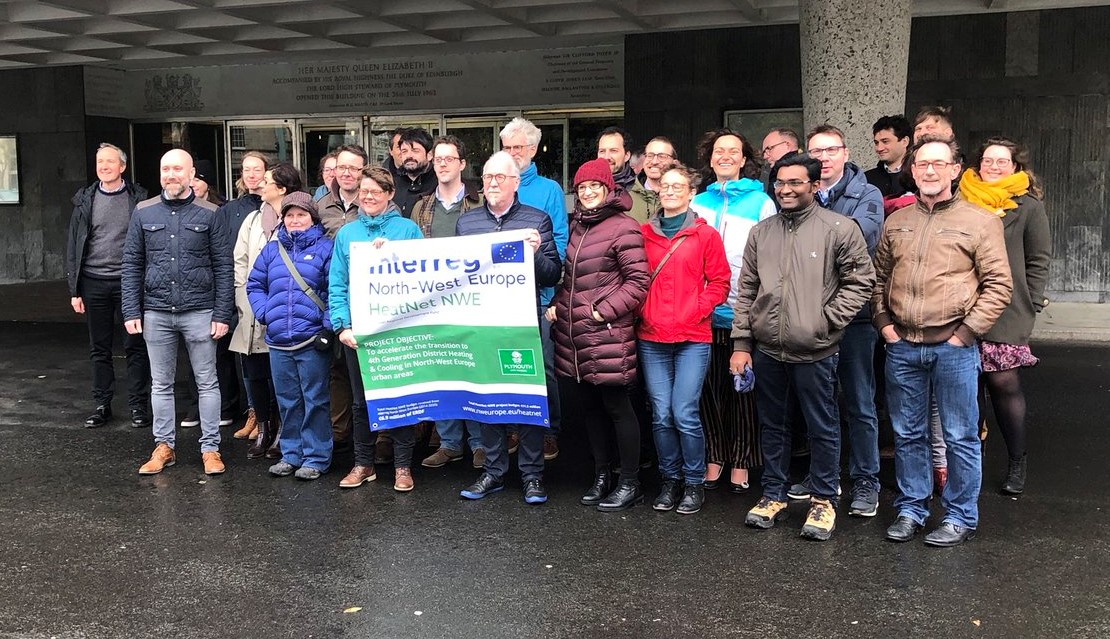On 14th and 15th March HeatNet NWE partners met in Plymouth, UK. What an opportunity to give you an overview of the progress of the pilot projects!
Plymouth is now finalising the technical and economic study for its future 4th generation district heating and cooling (H&C) network. It will be a combination of ground source heat pumps and a combined heat and power (CHP) plant. Trial drillings have been performed and confirmed the possibility to reach an aquifer in underlying limestone around 70 meters under the surface. The wells installation and the adaptation of the heating systems of buildings to be connected to the DHC are foreseen for the coming months.
In South Dublin, things are also moving forward. The City Council will set up the not-for-profit South Dublin District Heating company to manage the coming DHC network. The selection of the energy services company which is going to build, design, operate and maintain the infrastructure is in its final stage, as well as the contract with the heat supplier, a data centre. The laying of the heating pipelines will start in September.
The local energy company Mijnwater BV is now finalising the cluster D basement, an innovative energy centre which produces heating and cooling for the DHC network of Heerlen. The very-low temperature network (around 15°C - 25°C) recovers H&C from connected buildings and provides water at the required temperatures through high-performing heat pumps. How to speed up the on-site construction works? Mijnwater asked suppliers to deliver pre-fabricated network elements like the concrete basement and the H&C plant. Watch the video of the delivery on site here.
The City of Kortrijk is now in the 2nd stage of its project. The heat source (a CHP plant located in the swimming pool of the city) is operating, as well as pipes and heat exchangers. At the end of last year, they made an impressive crossing of the pipes under the railway. Connection works will be finalised by the end of the year, and the city is already looking for new customers to extend the infrastructure. In addition, Kortrijk has been selected as pilot for the ROLECs project (Roll-Out of Local Energy Communities) to experiment energy sharing between end-users. More information on the pilot website (in Dutch).
Did you know that the Scottish Government is looking into mandating Local Authorities to produce Local Heat and Energy Efficiency Strategies (LHEES)? The goal is to design operational plans to reach the Scottish energy and climates targets. The HeatNet NWE pilot Aberdeen is already a front-runner in this field as its transition roadmap towards heat decarbonisation is well advanced. The extension of its DHC network in the Torry area is fully part of it and works will start in May.
Last but not least, Boulogne took a huge step forward, with the installation of pipes on a bridge crossing the Liane river. This bridge is also a sluice and has to be dismantled every ten years for maintenance, but they found a creative solution to allow the operations. Ecoliane, the management company of the DHC network, installed flexible pipes which can be also dismantled during the operation slot. In addition, an innovative technology, named TERRAO, will be implemented to replace existing plate heat exchangers of the CHP plant: it is a direct air-to-water heat exchanger in which air and water are mixed together for a better energy transfer.

